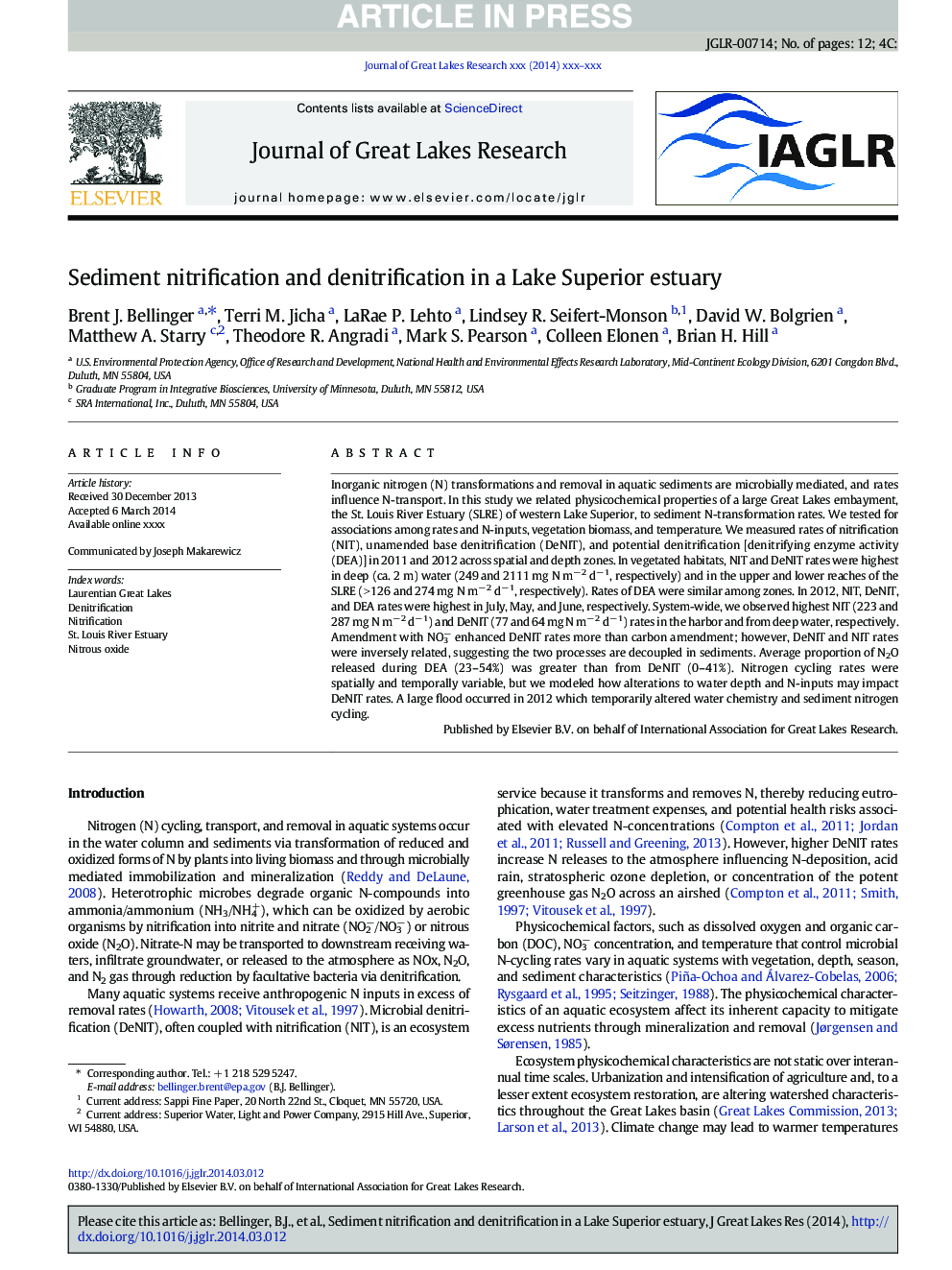| Article ID | Journal | Published Year | Pages | File Type |
|---|---|---|---|---|
| 6305231 | Journal of Great Lakes Research | 2014 | 12 Pages |
Abstract
Inorganic nitrogen (N) transformations and removal in aquatic sediments are microbially mediated, and rates influence N-transport. In this study we related physicochemical properties of a large Great Lakes embayment, the St. Louis River Estuary (SLRE) of western Lake Superior, to sediment N-transformation rates. We tested for associations among rates and N-inputs, vegetation biomass, and temperature. We measured rates of nitrification (NIT), unamended base denitrification (DeNIT), and potential denitrification [denitrifying enzyme activity (DEA)] in 2011 and 2012 across spatial and depth zones. In vegetated habitats, NIT and DeNIT rates were highest in deep (ca. 2 m) water (249 and 2111 mg N mâ 2 dâ 1, respectively) and in the upper and lower reaches of the SLRE (> 126 and 274 mg N mâ 2 dâ 1, respectively). Rates of DEA were similar among zones. In 2012, NIT, DeNIT, and DEA rates were highest in July, May, and June, respectively. System-wide, we observed highest NIT (223 and 287 mg N mâ 2 dâ 1) and DeNIT (77 and 64 mg N mâ 2 dâ 1) rates in the harbor and from deep water, respectively. Amendment with NO3â enhanced DeNIT rates more than carbon amendment; however, DeNIT and NIT rates were inversely related, suggesting the two processes are decoupled in sediments. Average proportion of N2O released during DEA (23-54%) was greater than from DeNIT (0-41%). Nitrogen cycling rates were spatially and temporally variable, but we modeled how alterations to water depth and N-inputs may impact DeNIT rates. A large flood occurred in 2012 which temporarily altered water chemistry and sediment nitrogen cycling.
Related Topics
Physical Sciences and Engineering
Earth and Planetary Sciences
Earth and Planetary Sciences (General)
Authors
Brent J. Bellinger, Terri M. Jicha, LaRae P. Lehto, Lindsey R. Seifert-Monson, David W. Bolgrien, Matthew A. Starry, Theodore R. Angradi, Mark S. Pearson, Colleen Elonen, Brian H. Hill,
